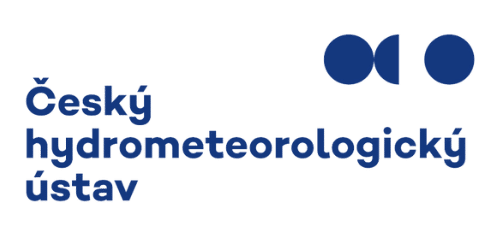
Brno (Mendelova univerzita) – 6. 6. 2024

Brno (Mendelova univerzita) – 7. 6. 2024
Learn how to analyze and interpret geospatial data from scratch using R, with practical functions designed specifically to simplify and accelerate batch processing.
In this specialized course for geoscience researchers, you’ll learn how to transform geospatial data into tidy formats, perform insightful analyses, and visualize results through map creation. By the end of the course, you’ll confidently write your own analytical scripts for geospatial datasets.
This two-day course is led by Mgr. Ondřej Ledvinka, Ph.D., a specialist at the Department of Hydrological Data and Water Balances at the Czech Hydrometeorological Institute (ČHMÚ). Dr. Ledvinka is also an assistant professor at the Department of Physical Geography and Geoecology at Charles University, specializing in geospatial data processing techniques applied in hydrology and climatology (see instructor profile).
You’ll practice hands-on exercises in the English version of RStudio. Computers will be provided at the venue, so you don’t need to bring your own one. After completing the course, you’ll also receive dozens of ready-to-use scripts to help you analyze your own data right away.

Course venue address
Course duration

Zakupte si balíček 2 nebo více vybraných kurzů a ušetřete
The RStudio environment in relation to geospatial data (e.g., geometry columns for vector data, formal raster data classes visible in the Environment pane).
Specifics of geospatial data processing using pipeline-supporting functions (particularly regarding geometry and associated measurement units).
Importing geospatial data into R from saved files (vector and raster data using the sf and terra packages), server-based services (esri2sf, arcgislayers, ows4R packages), or using specialized packages designed for downloading online geodata (RCzechia, geodata).

„Přestože s jazykem R pracuji již více jak 11 let, dozvěděl jsem se mnoho důležitých faktů, které mi coby samoukovi unikaly. Samozřejmostí je promítnutí těchto faktů do praktického využití, ať už se jedná o zefektivnění a zrychlení práce s R, tak především o teoretické základy, které pan Čapek vysvětlil naprosto bravurně. Jsem rád, že jsem kurz navštívil, protože při práci by mi jinak nastudování a pochopení principů, které stojí za různými typy testů hypotéz, trvalo roky. Kurz zabrousil též do pokročilejších metod. Vyzkoušeli jsme si základní zpracování časových řad, kdy jsme např. na čtvrtletní data nasazovali model a vykreslovali si grafy s předpovídanými hodnotami a konfidenčními intervaly. Za mě pořadatelé kurzu dostávají jedničku!“
Mgr. Ondřej Ledvinka, Ph.D., Český hydrometeorologický ústav

„Takto je to naprosto poprvé, kdy nám statistické metody někdo vysvětlil tak, že jsme dokázali pochopit i to, proč děláme to co děláme a jsme schopni to pak při práci i prakticky a především samostatně použit. Kurz byl zaměřen opravdu prakticky. Měl nevyhnutné množství teorie, no podstatnou část pak lektor věnoval praktické aplikaci statistických metod na jednotlivé úkoly v kontextu cíle, který daný úkol sledoval. Zároveň lektor velmi názorně vysvětloval jak o daných úkolech a aplikaci metod přemýšlet, co a proč se dělá a jak následně získané výstupy správně interpretovat.“
Vědecký pracovník, 1. lékařská fakulta Univerzita Karlova
Your instructor will be Mgr. Ondřej Ledvinka, Ph.D., a specialist from the Department of Hydrological Data and Water Balances at the Czech Hydrometeorological Institute (ČHMÚ) and an assistant professor at the Department of Physical Geography and Geoecology, Charles University.
Dr. Ledvinka specializes in geospatial data processing applied to hydrology and climatology at ČHMÚ. At Charles University’s Faculty of Science, he teaches courses focused on geospatial, hydrological, and climatological data analysis using the R programming language. He has more than 15 years of experience in systematically teaching data processing in R.
The course takes place at our training center located at Kodaňská 1441/46, Praha 10 (4D Center).
The price of the course is 12,900 CZK excluding VAT. The price includes the provision of tools and training materials, as well as refreshments during the course and lunch.
Payment is made via bank transfer based on the issued invoice.
Anonymní zpětná vazba účastníků z dotazníku spokojenosti po kurzu.
Absolventi tohoto kurzu…
4D Center
Kodaňská 1441/46
101 00 Praha 10
DataBon s.r.o.
Korunní 2569/108, 101 00 Praha 10
IČ: 09743804
DIČ: CZ09743804
© Copyright DataBon s.r.o.
Want to receive push notifications for all major on-site activities?

Zakupte si balíček 2 nebo více vybraných kurzů a ušetřete
Pod vedením zakladatele Datové akademie Dávida Tkáče mj. zjistíte: